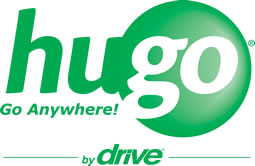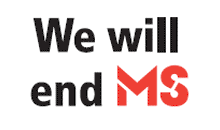Two Old Boomers on a Cruise to the Sun
Bathing Suits, Motorcycle Helmet Cleaner, and Prescription Medications
When you’re motorcycle cruising you must remember you’re not cruising on a ship. You can’t take great steamer trunks full of several changes of clothes per day, nor can you take a different pair of shoes for each outfit. On a motorcycle what you can pack is restricted by weight, size and utility. And if you’re over 65 one entire motorcycle bag may be needed for your prescription medications! So plan carefully.
Adventure planning is an art and a skill that requires detail thinking. Being the detail-oriented person that I am, I was elected to do the planning. Vern provides the Grand Vision, so my planning, including all my decisions on what to pack, and my thoughts on what to buy that we don’t yet have, are all based on his experiences during his previous Baja trips.
So I’m starting with what I think we need and refining the process as I go along. Vern’s message is: “Less is more.”
Documents
There are a number of documents that everyone requires when travelling to Baja California and Baja California Sur. Some are necessary, others are recommended, and some are discretionary.
-SUGGESTION-
Make one or two copies of all your documents and have one set available and one set packed in luggage where you pack your medications or other valuables. You might consider leaving a set of copied documents at home or with someone you can contact easily should this information be required.
Passport – I applied for a passport and ensured Vern’s existing one won’t expire before our return date. Canadians require a passport to enter the United States and Mexico. I printed a passport application from the Passport Canada site, completed it then took it to a Passport Canada office for checking and sending it in. I received my passport via registered mail within 10 days.
Tourist Visa – We do not need a Tourist Visa for Mexico because we are staying on the Baja coast and will not be entering mainland Mexico. If you intend to go farther afield you can get a visa just inside the Tijuana border area.
Travel Medical Insurance – Canadian health insurance does not cover you while outside your home province. You will need to consider any current health issues you may have and what medications you are currently taking. Government funding for medication usually covers a three-month period at a time. If you are travelling for longer than 3 months I suggest you purchase what you need for the length of time you are away just before you leave. That way you will likely pay the least amount possible.
When travelling by car or motorcycle rather than by plane,
you will require documentation for your vehicle.
Vehicle Insurance – It is considered a must to purchase vehicle insurance in case you are in an accident—even one that’s not your fault—while travelling in Mexico. Unless you settle with the other motorists at the site of the accident (not a good idea), your extended Mexican vehicle insurance will provide evidence of your ability to pay expenses if you are judged to be responsible for the accident. And perhaps equally important, the Mexican police will not impound your vehicle while deciding on cause of accident. It is also important to get enough third party liability insurance—at least $300,000 worth. That amount is set at the annual minimum wage X 5. Some Mexican states require more, so judge accordingly.
Liability insurance is not required for a motorcycle but it is required when you rent a car.
Vehicle Import Visa – Because we are travelling in Baja California and Baja California Sur only, we do not need this document. If we planned on visiting mainland Mexico we would require this document to prove that we were bringing our vehicle into Mexico to use as part of our vacation and would not leave it there or sell it while in Mexico. The Vehicle Import Visa is stamped again on your way out of Mexico to prove you have not sold or stored your vehicle in Mexico.
Shots and Vaccines – Mexico does not require any specific vaccine while travelling through the country unless you have also traveled in areas where you may have been in contact with the Nile Virus. Check with your doctor to determine if you require other shots. Don’t forget ‘flu and pneumonia shots if you usually take them.
Personal Medical Kit
Although we can buy most items we will need for medical and personal care in Mexico, I chose to put together a Personal Kit containing items we might want to use every day. There are a number of suggestions online for medical kits and these depend on where you are going and difficulties you could run into on such a trip. Travelling though Baja California and Baja Sur I knew we were not going to need supplies for extreme cold or frostbite. These are the items I chose for our Baja Adventure:
Prescription Medications
• Prescription medications including prescriptions for glasses and sunglasses.
• Copies of all prescriptions, including the generic names for medications.
• A note from our family doctor indicating all medications we take on a regular basis, including brand names and dosages. (Not essential.)
Over-the-counter Medicines
• Antihistamine
• Decongestant, alone or in combination with antihistamine
• Medicine for pain or fever (such as acetaminophen, aspirin, or ibuprofen)
• Mild laxative
• Cough suppressant/expectorant
• Cough drop
• 1% hydrocortisone cream
• Insect repellent containing DEET
• Sunscreen (preferably SPF 30 or greater) that has both UVA and UVB protection
• Antibacterial hand wipes or alcohol-based hand sanitizer (at least 60% alcohol)
• Lubricating eye drops
• Water purification tablets
First-aid Supplies
• Bandages, gauze, ace bandage
• Compression bandage
• Antiseptic
• Tweezers
• Scissors
• Cotton-tipped applicators
• Moleskin for blisters
• Aloe gel for sunburns
• Oral rehydration solution packets
Carry a card with the following information in case of a medical emergency.
• Your name and name(s) of travelling companions.
• Any allergy you may have.
• Prescription medications you take.
• Name, address, and phone number of a family member or friend at home.
• Name, address and phone number of your primary health care provider and/or pharmacist at home.
• Contact name, address and phone number of your accommodations at your destination(s).
• Address and phone number of the Canadian Embassy, Consulate, or High Commission in your destination country (you might also consider carrying the Emergency Contact Card).




 and get Cash rewards!
and get Cash rewards!